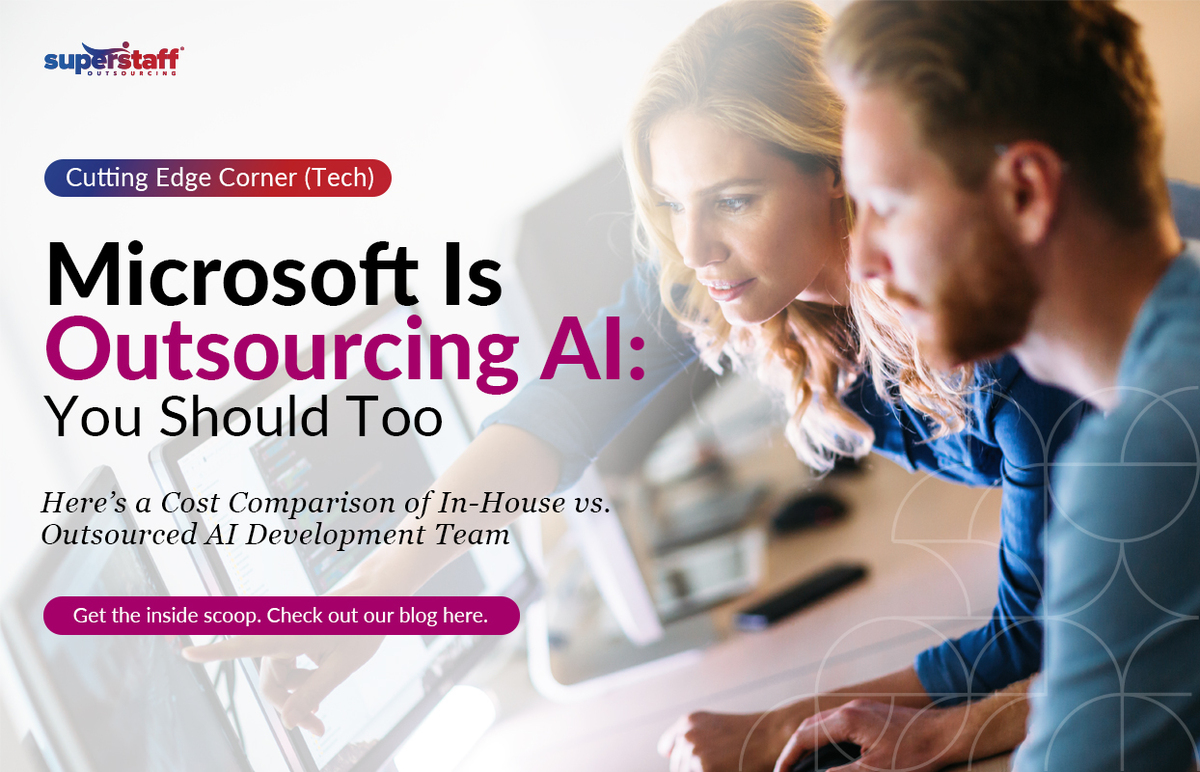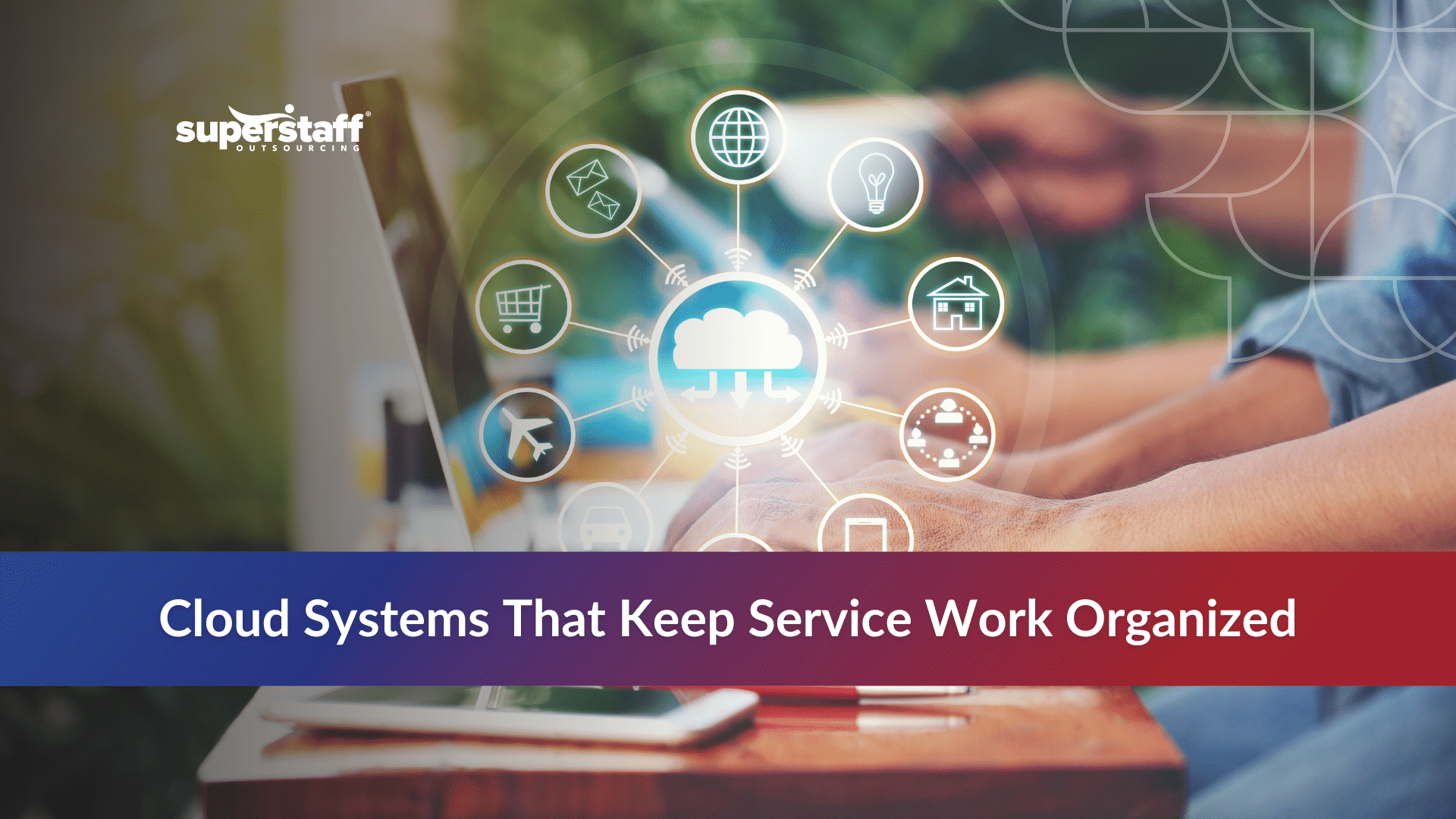
In a move that caught the tech world’s attention, industry giant Microsoft reportedly outsourced its AI development to OpenAI. The reports have naturally shaken up the industry and shed light on the many benefits of outsourcing.
Beyond leveraging cutting-edge technology, the company’s decision to outsource is a calculated move to optimize resources and focus on core competencies that all businesses should adopt. Let’s take a closer look at why you should do the same.
Understanding Outsourcing in AI Development
Businesses of all sizes, from startups to industry leaders like Microsoft, outsource to stay ahead in the cutthroat tech landscape. According to Deloitte’s 2022 Global Outsourcing Survey, 57% of executives cited cost reduction as the primary reason, followed by shifts in business strategies and operating models (51%) and access to new capabilities (49%).
The same study revealed that when it comes to tech, IT, and AI services, here are the most outsourced services:
- Cybersecurity-81%
- App/software development-79%
- Infrastructure-77%
- Next-gen tech-78%
- Data and analytics-75%
- App support-73%
- Helpdesk and user computing-68%

Breaking Down the Costs: In-House vs. Outsourced AI Development
Let’s break down the cost dynamics of in-house and outsourced AI development to help you decide which path to take.
Personnel Costs
The demand for tech talent in the United States will rise to 7.1 million jobs by 2034, up from an estimated six million in 2023. Despite notable layoffs in the tech sector in 2023, the unemployment rate among tech workers remains significantly lower than that of the general workforce.
What does this mean for your business? Well, increased demand translates to higher costs.
For an in-house AI app team, you must account for the substantial salaries of skilled AI developers and data scientists, particularly in tech hubs like Silicon Valley. Additionally, you need to budget for support staff, including HR, IT, administrative support, and other non-technical positions.
What are other personnel costs that come with an in-house AI team?
- health insurance (medical, dental, and vision coverage)
- retirement plans include 401(k) contributions
- stock options
- bonuses
- paid time off
- AI learning courses and certificates
In contrast, an outsourced AI development team operates under a different financial model. Contractual payments, either fixed price or hourly rates, are typically lower than in-house salaries, especially if the work is outsourced to countries with lower labor costs. Payments can also be milestone-based, linked to the completion of specific project stages.
Unlike in-house teams, outsourced teams do not require direct benefits from the client, as the outsourcing company manages health insurance and retirement plans. The responsibility for training and development costs also falls on the outsourcing provider, not the client. Moreover, recruitment costs are drastically reduced as the outsourcing partner handles hiring.
Let’s dive into some numbers to paint a clearer picture.
In-House Team (U.S.)
Salary: $120,000 – $200,000
Benefits (30% of Salary): $36,000 – $60,000
Recruitment, Training, and Overhead: $20,000 – $40,000
Total Annual Cost per Employee: $176,000 – $300,000
Outsourced Team (Philippines)
Hourly Rate: $30 – $80
Annual Cost (Full-Time Equivalent): $60,000 – $160,000
Deciding between in-house and outsourced AI development is a strategic choice between control and cost efficiency. While in-house teams offer a tighter grip on project nuances, outsourced teams present a compelling case for significant savings and operational flexibility. The financial dance between these two options is intricate, but understanding the steps can lead to a harmonious and cost-effective solution for your AI ambitions.
Infrastructure Costs
Tech and IT infrastructure is another primary cost driver in AI development. The market is expected to reach $183.57 billion by 2029, growing at a CAGR of 9.32%. However, there are glaring differences in in-house and outsourced AI infrastructure costs.
If you’re setting up an in-house AI team, you’re considering a significant investment in hardware, including powerful servers and high-performance computers necessary for training complex AI models. This alone can already be quite expensive.
Add networking equipment, like routers and switches, to ensure smooth connectivity and robust data storage solutions, including on-premises storage and backup systems. Software costs quickly add up, too, from licenses for development environments and collaboration tools to security software for protecting your data.
Don’t forget the ongoing need for continuous learning, with courses, certifications, and conferences essential for keeping your team ahead of the AI curve. Then there are cloud services — despite having in-house infrastructure, cloud-based compute resources for AI model training and deployment are often indispensable, alongside storage and data transfer costs.
On top of those, you’ll need physical office space, utilities, and maintenance, which can be significant given the cooling and power requirements of high-performance computing. Plus, there are the everyday expenses of running an office, from furniture and office supplies to IT support and maintenance staff.
On the flip side, consider an outsourced AI team setup. The scenario changes dramatically. The need for expensive on-premises hardware is minimized—primary workstations will do as the outsourcing provider manages the heavy computational lifting and storage. Software costs are streamlined, too, often bundled into the service fees provided by the outsourcing firm, which includes necessary development tools and security software.
Cloud services, a significant cost in an in-house setup, are typically managed and included in the outsourcing contract. Facilities costs plummet as the demand for physical office space, utilities, and maintenance is significantly reduced. With less staff on-site, the expenses for furniture, office supplies, and IT support also drop considerably.
Breaking down the numbers: for an in-house setup, annual costs can range from $150,000 to $480,000 per employee, factoring in hardware, software, cloud services, and office-related expenses. In contrast, outsourcing can be much more cost-effective, with total annual costs ranging from $70,000 to $220,000 per full-time equivalent, including service fees and minimal on-premises costs.
Operational Costs
Goldman Sachs projects that big tech companies will spend over $1 trillion on AI over the next five years. But it’s not just tech giants investing in AI. The global AI market is expected to hit $826 billion by 20230.
While the market numbers are already staggering, the operational costs of maintaining in-house AI development teams can be just as daunting. Salaries, overhead, and infrastructure quickly add up. In-house teams also need investments in utilities and facilities, training and development, and security and compliance.
Another significant benefit of outsourcing is its flexibility. You can scale resources up or down based on project needs without the long-term commitment and overhead associated with full-time employees. This scalability allows for greater agility in responding to market changes and project demands.
Time-To-Market
In-house teams embark on a deliberate journey, starting with the meticulous task of recruiting and onboarding top talent, which can take 3 to 6 months. This investment aims to forge a cohesive unit deeply embedded in the company’s ethos — a team that promises long-term stability but demands patience upfront.
Once assembled, the development phase starts, spanning 6 to 12 months. Yet, this path isn’t without its hurdles. Internal bottlenecks and the learning curves inherent in cutting-edge tech can slow progress, extending the total TTM for in-house projects to 9 to 18 months — a testament to the meticulous art of nurturing internal capabilities.
In stark contrast, outsourced AI software development offers a turbocharged alternative. The initial setup is swift, requiring 1 to 3 months for onboarding and coordination with the outsourcing partner. The advantage lies in access to specialized talent and established workflows that expedite the development phase. Outsourced teams with scalable resources and honed expertise can compress the development timeline to 4 to 8 months.
The key to this efficiency is seamless communication and meticulous coordination throughout the project lifecycle. As a result, the total TTM for outsourced AI ventures typically clocks in at 5 to 11 months—a significant reduction compared to their in-house counterparts.
The choice between in-house and outsourced AI services is a strategic dance, balancing control and speed against market demands. In-house teams offer unparalleled alignment with internal goals and values, fostering deep integration with company culture. However, they require upfront investment and patience as the team gels and skills are honed.
While relinquishing some direct control, outsourcing leverages external prowess to sprint ahead in the TTM race, crucial for seizing fleeting market windows. Ultimately, businesses must weigh these strategic imperatives against their specific needs, resources, and ambitions to make a choice that propels them ahead in the dynamic AI landscape.

Accelerate Your AI Development With SuperStaff
With access to a global talent pool, SuperStaff provides cost-effective, high-quality services across various fields, allowing companies to focus on core competencies and drive innovation. By partnering with SuperStaff, you can reduce operational costs, enhance flexibility, and quickly scale your workforce to meet business demands, all while maintaining high standards of quality and precision.
SuperStaff’s commitment to excellence ensures that your projects are handled with the utmost care, supported by robust risk management and quality assurance practices. This strategic outsourcing solution accelerates your time-to-market and mitigates risks associated with recruitment and training.
Partner with SuperStaff to gain a competitive edge, optimize resources, and propel your business forward confidently.






